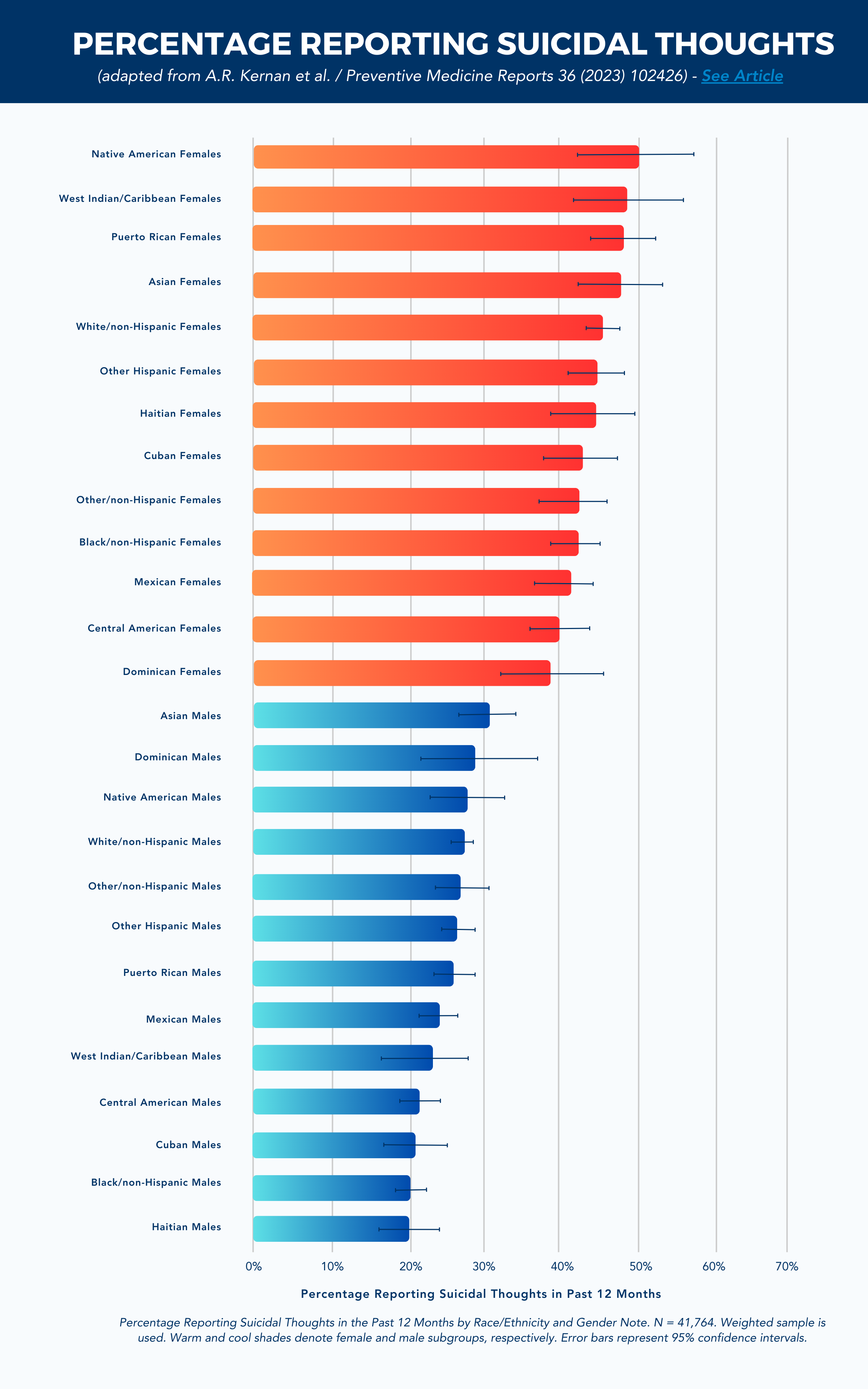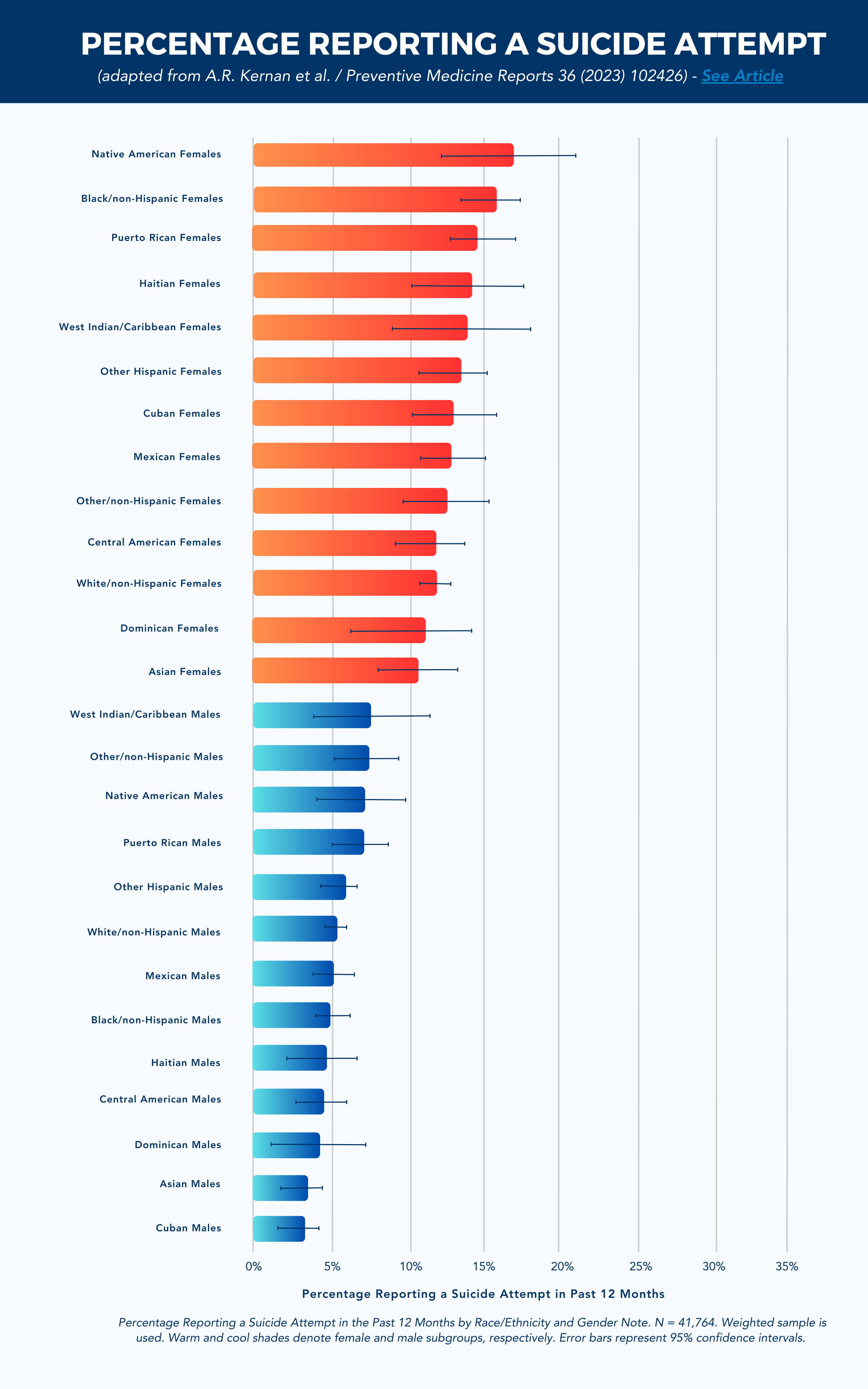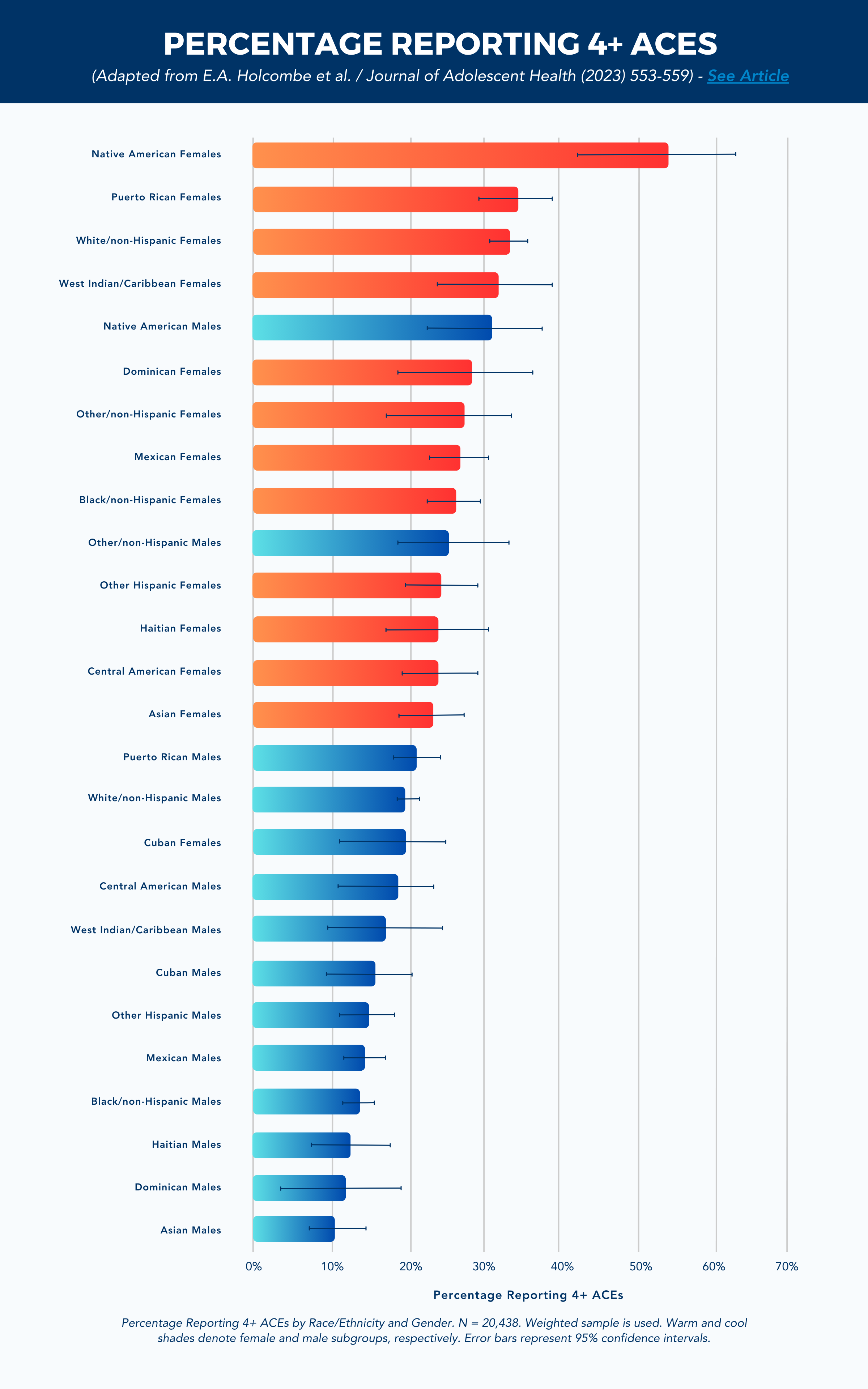New Research Reveals Native American Girls At Highest Risk for Suicidal Thoughts, Attempts in Florida
Wednesday, Oct 25, 2023
Rates of youth suicide have increased by more than 45% in the past decade (KFF). Yet, what do we know about the individual lives cut short by this staggering, broad-stroke statistic and the much larger set of youth who have suicidal thoughts and have attempted suicide? The picture is now becoming clearer in Florida thanks to new research that reveals differences in suicidal thoughts and behaviors across race, ethnicity and gender, including the group at highest risk - Native American girls.
The study, co-authored by Ryan Meldrum, PhD, professor in the School of Criminology and Criminal Justice, and published in Preventive Medicine Reports last month, draws on data from the 2022 Florida Youth Substance Abuse Survey (FYSAS), which in addition to capturing youth reports of suicidality also provides state and county-level estimates of substance abuse prevalence and trends among students in grades 6-12.
The findings of the study revealed higher rates of suicidality for females, particularly among Native American females. 34% of all youth surveyed reported suicidal thoughts within the past year, but among Native American girls it was 50%. Likewise, while 9% of all youth reported a suicide attempt, this statistic was nearly 17% among Native American girls. Other racial/ethnic groups of girls that reported particularly high rates of suicidal thoughts and attempts were West Indian/Caribbeans, Puerto Ricans, and non-Hispanic Blacks.
Digging Into the Survey Data
Dr. Meldrum has published more than a dozen articles based on FYSAS data, ranging from racial and ethnic differences in school arrests and suspensions to the causes and consequences of inadequate sleep, self-control, digital self-harm and other psychosocial traits that undergo rapid development during adolescence. As one of the most frequent users of the FYSAS survey data for the better part of the past decade, Dr. Meldrum was invited to serve as a member of the FYSAS Working Group, which considers changes to the statewide survey each year. Based on Dr. Meldrum’s contributions and expertise, the FYSAS has in the past and/or currently includes questions related to sleep duration, self-control, and digital self-harm.
Of note, an inventory tapping Adverse childhood experiences (ACEs), focusing on different aspects of abuse, neglect, and household dysfunction, was added to the high school version of the FYSAS in 2020. A related study using this inventory by Dr. Meldrum and co-authors from Sam Houston State University and Brigham Young University published in the Journal of Adolescent Health earlier this year examined which groups of youth report the greatest exposure to ACEs. Not unlike the study focused on suicidality, the data once again showed female youth and Native American girls in particular report significantly elevated exposure to a high number of ACEs.
“In combination, these two studies document a troubling trend that Native American youth, and Native American girls in particular, face significant socioemotional difficulties relative to other youth in the state,” said Dr. Meldrum.
Clinical and Practical Implications of the Findings
The question now becomes: How should this data be used to better serve the Native American youth population? Heather Howard, PhD, LICSW, associate professor in the Sandler School of Social Work, shared the importance of increasing protective factors for youth and their families to prevent the negative impact of ACEs.
“To support Native American families, particularly those with female children, we need to have targeted, culturally sensitive prevention interventions,” said Dr. Howard. “Most importantly, engagement with Native American families, requires a partnership with Native American persons with lived experience as the leaders in addressing youth suicide.”
Additional strategies for suicide prevention, according to Dr. Howard, would be to strengthen households and financial security for Native American families that have been systemically marginalized and to provide family-centered treatment for parental substance use disorder – a prevalent ACE for today’s youth.


